Heavy Vehicle Forum held in Beijing in 2015 to explore the prospects of heavy truck development under the new normal
On November 3, 2015, the 2015 International Forum on Heavy Commercial Vehicles was held in Beijing. This year's international forum dedicated to the field of heavy-duty vehicles in China focuses on the theme of “High Emission Standards and Market Outlook for Heavy-duty Vehicles under Customer Demand†and explores opportunities and challenges in the future of heavy-duty vehicles in the form of topical discussions. Nearly 80 business leaders, industry experts and leaders from heavy-duty truck OEMs, parts suppliers and industry analysts and consulting agencies came to the scene to present their insights on the future development and challenges of China's heavy-duty vehicles.
Xing Lei, editor-in-chief of China Automotive News, introduced: At present, the heavy-duty truck industry at home and abroad are facing enormous challenges. Heavy truck manufacturers face many difficult tasks and choices such as market tightening and better emission regulations and user requirements. The future prospects of the heavy truck market, how current and future policies and regulations will affect the heavy truck industry and many similar issues will be well answered in today's forum.

China Automotive News Editor Xing Lei
In the “Policies, Regulations and Markets†panel, Xu Changming, director of the Center for Economic Research of the National Information Center, said in a speech entitled “Economic Transition and Heavy Truck Markets†that in the future economic restructuring process, there will be four obvious trends affecting the heavy truck market. development of. First, the potential economic growth rate is declining. The second is the transformation of growth momentum: from export pull to domestic demand pull, from investment pull to consumption pull. The third is the industrial transformation and upgrading. Fourth, market forces have been strengthened. These four trends mean that the future heavy truck market will have two important features: low sales growth but accelerated product technology upgrades. Xu Changming believes that the heavy truck market will rebound after the economic restructuring is in place, but the market growth rate is only 3-4 percent, which is lower than the GDP growth rate by 2-3 percentage points.
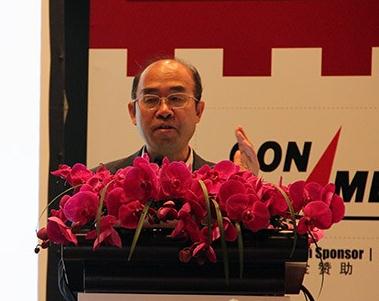
Xu Changming, Director, Center for Economic Research, National Information Center
In his speech titled How to Earn More Efforts in Accordance with More Stringent Emissions Regulations, Austrian EFS Automotive Enterprise Consulting Co., Ltd. President and CEO Lei Shengsheng mentioned that as environmental pollution becomes increasingly severe, emissions issues are getting more and more attention. The country also A number of regulations have been introduced to try to reduce pollution emissions. Under this macro background, during the period from 2020 to 2030, heavy vehicles may exceed passenger vehicles in the transportation industry to become the largest source of fuel consumption and greenhouse gas emissions. In addition, breakthroughs have been made to reduce the technical difficulties of PM2.5 pollutants, but the specific effects in the implementation process still depend on the specific implementation framework. Moreover, the current effective measures to reduce carbon dioxide are still very limited, and new effective measures should be quickly discovered. Therefore, accelerating the implementation of Euro VI emissions regulations will not only temporarily reduce pollutants, create a good living environment for the general public, but also promote the growth and improvement of China's economy through technological innovations. Promote the improvement of employment rate. It is expected that in the future, it will be possible to create 200,000 jobs, up to 400,000, in the course of emission upgrades.
Edmund Chew, director of research at Truck Industry Research (TruckIndustryResearch), said in a presentation entitled "How regulatory distortions and structural problems affect the transformation of the truck industry", the truck industry is very sensitive to the government's industry policies. The structure of the truck market is very unstable, so it will be affected in varying degrees by policies. The transformation of the logistic structure of the truck market will be the key to upgrading the transformation. However, overcapacity has slowed down the transition process. He expects China will fully implement the Sixth National Standard in 2020, but by then China's heavy truck capacity utilization will be only 28%. "From now on, it's hard to say who will eventually become the winner in mainstream heavy truck companies," Edmund Chew said. He expects heavy truck products to shift from low to medium-high end in the future. Even if the total amount does not increase in the next 10 years, the value of trucks will increase by 2-3 times.

He Mochi, Executive Director of Scania China Strategic Center
In the panel entitled “High Emission Standards and User Demand: Views of Heavy Truck Manufacturersâ€, He Mochi, executive director of the Scania China Strategy Center, stated in a speech entitled “Challenges and opportunities for the heavy-duty industry under the new normal Business development will be affected by many factors such as the macro environment, regulatory environment, industry development and supply of vehicle manufacturers. Transport efficiency and transport specialization will have different degrees of influence on market size. In fact, industry consolidation has only just begun. The medium and long-term planning for the development of the logistics industry will play a supporting and guiding role. He predicts that China's low-end card market will disappear in the future. Once China implements the Sixth National Emission Standard fully, the entire market will be high-end. From a logistics point of view, the total number of transport companies in the next 10 years will be reduced from the current 760,000 to 70,000.
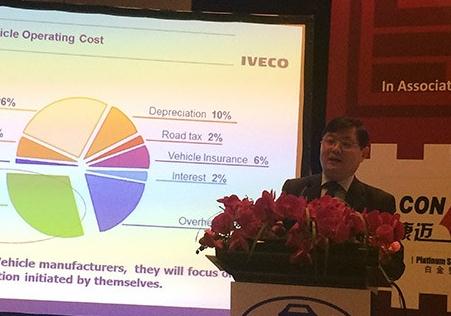
Li Xiangping, general manager of Iveco (China) Commercial Vehicle Sales Co., Ltd.
Li Xiangping, general manager of Iveco (China) Commercial Vehicle Sales Co., Ltd., said in a speech entitled Heavy-duty Commercial Vehicles Reduction of Emissions: Measures and Testing Standards. Through scientific and technological progress and innovation, it is an important way for heavy-duty commercial vehicles to reduce their emissions. During the entire vehicle manufacturing process, as long as the optimization is carried out in each key technical part, the emission of pollutants can be greatly reduced, such as the powertrain technology of vehicle manufacturers, vehicle lightweight technology, and in-depth technology of aerodynamics. Research etc. By reducing the resistance to the vehicle, it can also save fuel and reduce emissions. In addition to vehicle manufacturers, there are many other factors and extrinsic aids to help reduce emissions, such as improving public infrastructure and traffic control, as well as the driver's own driving habits.
He believes that fuel economy is a very sharp task for manufacturing. The energy saving and emission reduction of commercial vehicles is consistent with the needs of customers. The customer is most concerned about fuel economy, and the market is more powerful than the government. The government should bring together all interest groups in order to achieve maximum effectiveness. It is not enough for manufacturers to complete energy-saving and emission reduction tasks.
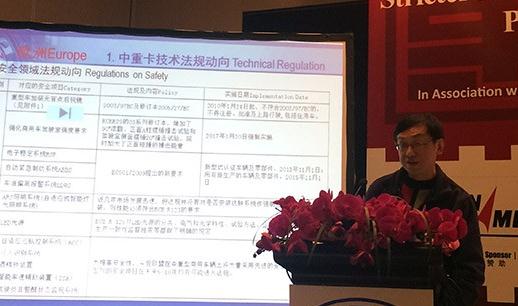
Dongfeng Commercial Vehicle Technology Center, R&D Resource Planning Department Chief Expert and Professor-level Senior Engineer Wang Weidong
Wang Weidong, chief expert of the R&D Resource Planning Department of Dongfeng Commercial Vehicle Technology Center and a professor-level senior engineer, said in a speech titled Development Trends of Heavy-duty Trucks that in the development of medium-heavy truck technology, the state has introduced a very large number of policies, most of which are The focus is on energy efficiency, emission reduction, and active and passive safety aspects. In China, the development trend of heavy-duty vehicle technology will focus on the vehicle's power and economy, vehicle safety, vehicle reliability and durability, and the comfort and stability of the vehicle. He said that policies and regulations and customer needs are just two wheels driving the development of technology, and it is expected that the fuel consumption limits for heavy-duty commercial vehicles will drop by 20%, 35% and 50% respectively in 2015 compared to 2015.
Wu Zhijun, general manager of Navistar China/Asia, stated in a speech entitled “U.S. Clean and Efficient Commercial Vehicle Technology Trends†that global warming puts forward more stringent requirements for reducing carbon emissions and reducing fuel consumption, while China China faces a simultaneous reduction. Exhaust emissions and fuel consumption challenges. He believes that technical integration at the vehicle level can bring about a significant increase in fuel economy, vehicle interconnection is the future direction, and it will facilitate the management and operation of the fleet while also improving the overall fuel economy of the industry. Navistar will maintain its development policy in China with a profitable and sustainable business growth model. In joint venture with JAC, the engine joint venture was relatively smooth, with good product and quality and customer feedback. Jianghuai, a colleague, is producing Navistar's light trucks and heavy trucks in Latin America, and the total number has reached more than 1,000 units. Wu Zhijun thinks that the long truck truck market in China will depend on regulations and whether the relevant departments can give customers a choice, but after the policy is liberalized, long trucks and flat trucks will coexist.
In the “Sustainable Development and Challenges: Supplier Perspectives†group, Wang Bin, President and CEO of ASIMCO Technology & Technology Group Co., Ltd., stated in a speech entitled Challenges and Opportunities for China's Domestic Electronic Control Products in the New Stage. In January-September 2015, electronically controlled diesel engines produced a total of nearly 1 million units, an increase of 12% compared to nearly 880,000 units in the same period in 2014. This is good for electronic control product manufacturers. At the same time, however, electronic control product manufacturers also face challenges from various emission reduction policies. For example, the National 4 announcement was suspended for a month to rectify. Since the second half of 2014, the new-generation environmental protection announcement model has dropped sharply, and there have been no EGR plans in the environmental protection announcement since 2014. At the same time, the competition of electronic control products will become increasingly fierce. For domestic electronic control manufacturers, the standard R&D process, patent and intellectual property protection issues, process and quality stability, and scale and manufacturing costs will be key points for breakthrough. Wang Bin said that in the future, the “counterfeit†situation of the five countries and six emission standards will greatly improve compared to the situation in the three countries, but if they fully meet the corresponding European standards, it may take two generations of time.
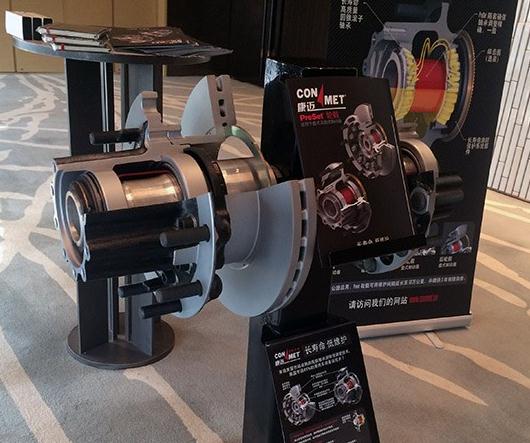
Conley wheels
Mike Harman, VP of Worldwide Sales at ComGroup, said in a commercial vehicle market in the eyes of Comtech: past, present and future speeches, the changes now facing Chinese logistics are similar to changes in the United States over the past 15-20 years, such as Rapid urbanization, and the government's policy development and more attention to the consumer economy, these factors will change China's mode of transport, and the axle-spoke model has gradually taken shape, and trucks will have more long-distance transportation in the future. This will bring some new challenges to the truck. These future purchases will require more horsepower, fuel economy, and more reliable maintenance of spare parts. The overall cost will be lower. The ultimate goal is to reduce its downtime and maximize equipment utilization. In order to support China's OEM customers and achieve a change in the logistics model, Combi's mission is to cooperate with OEMs of trucks and buses in China to develop wheel-end technologies that can provide the best technology for any of our markets and industries.
According to Chen Chunyi, general manager of console sales at WABCO China, in a speech titled "Improving Vehicle Efficiency and Supporting Sustainable Development," he believes that under the premise of improving vehicle efficiency and supporting sustainable development, WABCO has detailed plans to improve the development of vehicle efficiency. circuit diagram. Through WABCO's green technologies to improve fuel efficiency, reduce emissions, reduce body weight, and recycle energy to support sustainable development. In addition, the wheel-end solutions and air compressor technology in lightweight innovation will make outstanding contributions to improving vehicle efficiency and reducing emissions.
Chairman of the Heavy Manufacturers Association (Asia) and Lin Haori, Vice President of Morifense Control Technology (Hangzhou) Co., Ltd. and General Manager of the Asia-Pacific Region, said in a speech titled Natural Gas Engines to Promote the Future, Natural Gas Engines Drive Energy Savings One of the optimization options for emission reduction. Because natural gas engines can produce less emissions of nitrogen oxides, carbon dioxide, and PM, and the application technology of natural gas vehicles is relatively mature, thereby reducing costs. The abundant reserves and use of shale gas have greatly changed China's energy situation. At the same time, challenges also exist, such as relatively complex mining techniques, deeper exploitation, and insufficient natural gas pipelines. At present, China still imports large quantities of high-priced natural gas. To change this situation, the Chinese government is also trying to invest in the construction of gas station infrastructure to change this situation.
Participants agreed that although China’s heavy-duty vehicle market is declining, if companies can regard the “downturn†as an “opportunity†and continue to provide differentiated products and services to meet differentiated demands, they can still maintain sales growth in the overall market decline.
Knitted Carpet
Our knitted carpet has the function of balancing the indoor temperature. In winter, it can block the coolness of the ground and maintain the indoor temperature. When the air conditioner is turned on in summer, it can prevent the low temperature in the room from being lost through the ground, thereby keeping the room cool.
It is also very easy to replace and can keep the floor clean. When the carpet is dirty, it only needs to be removed and cleaned. Our products are woven from high-quality wool and are very durable.
Yacheng Knitting Co., Ltd. can mass produce customized high-quality knitted garments, including sweaters, Custom Knit Sweaters, Knitted Pants, Knitted Skirt , Knitted Shoes, Knitted Scarves and Knitting Blanket. If you need to order knitted products, please contact us.
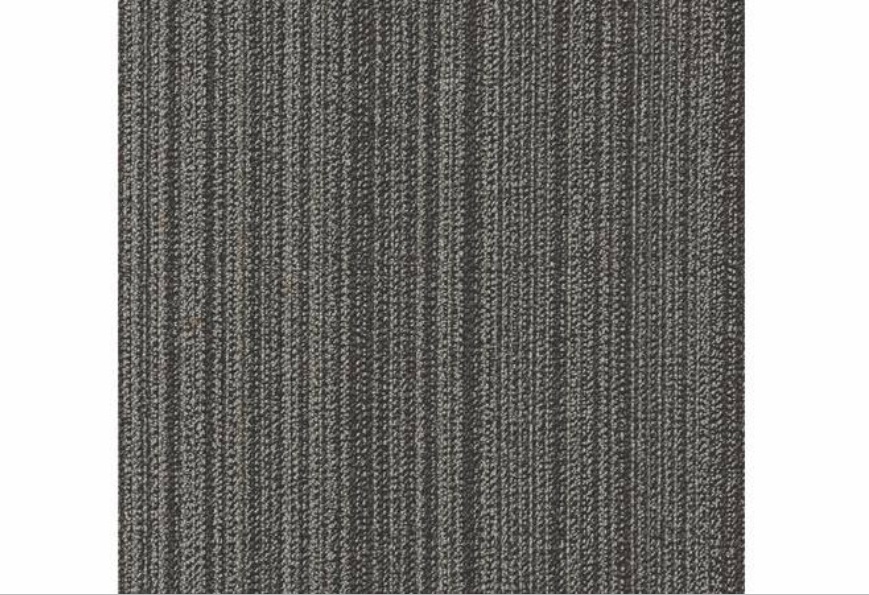
Knitted Carpet,Chunky Knit Rug,Knit Wool Rug,Chunky Knit Carpet
DongGuan Yacheng Knitting Co., Ltd , https://www.dgoemknittingyc.com